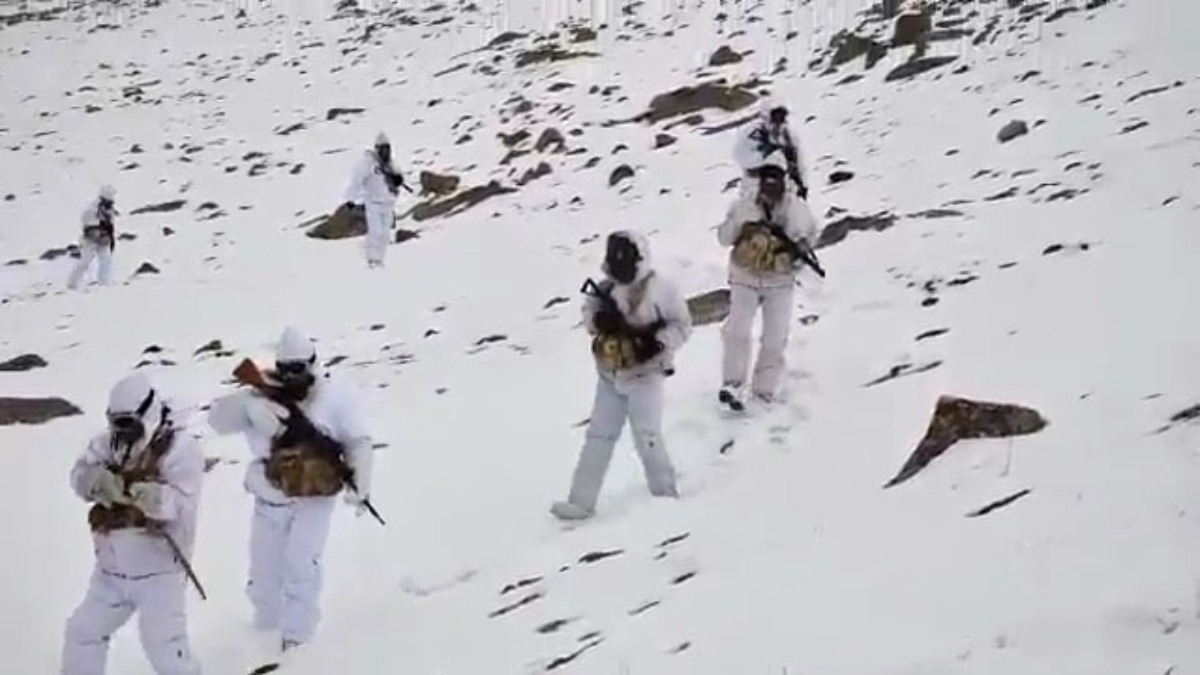Maritime History Society organised the first ever National Maritime Heritage Conclave on 18-19 November 2020 in collaboration with Gujarat Maritime University as the Academic Partner, The Daily Guardian as Media Partner and All India Marine Pilots Association as Professional Partner. Streamed on the digital media it drew a significant online attendance across sessions. As already mentioned in these columns the theme of the Conclave was Unsung Frames in Indian Maritime History.
In his welcome address, Cmde Odakkal Johnson, Director MHS stressed the need, importance and motivation for maritime consciousness across multiple frames. Vice Adm RB Pandit, Chief of Staff, Western Naval Command and Chairman of Maritime History Society, in the inaugural address pointed out that the maritime history of India deserves the attention of both young and veteran scholars. Going deeper into the theme of the Conclave, he highlighted that the maritime medium remains a mystery due to our ignorance which can be overcome by digging deeper and exploring topics such as the unsung frames of the coastal communities and the contribution of women in the Indian maritime history. He reiterated the need to address a gap in our maritime history and heritage for which the eminent and young scholars must come together and be involved in a copious discourse. With reference to the coastal communities, he observed that the sea facing communities in our country have proven to be extremely helpful as they offer aid and assistance to the Indian Navy in times of disasters and catastrophes.
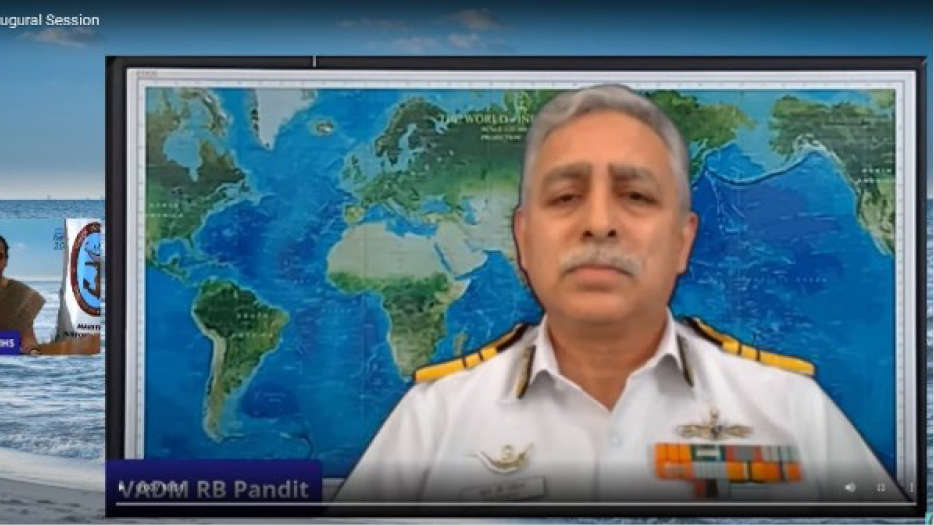
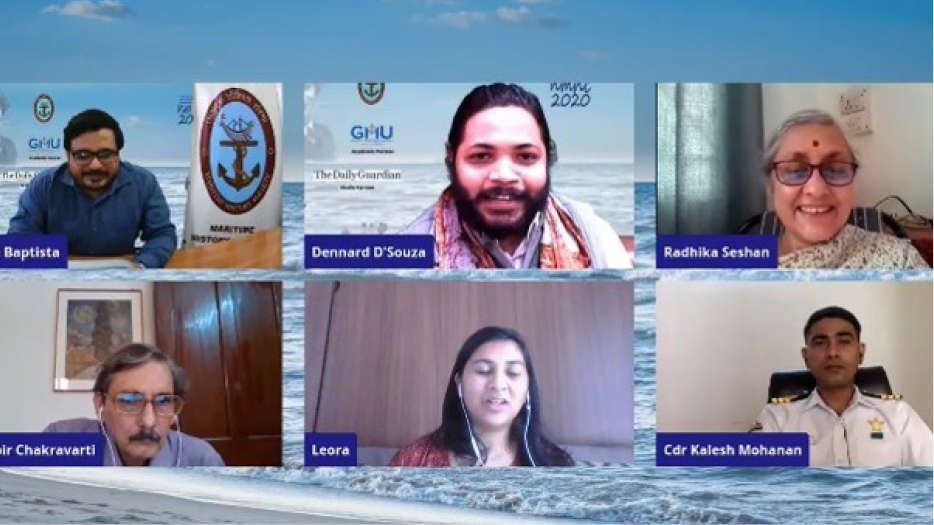
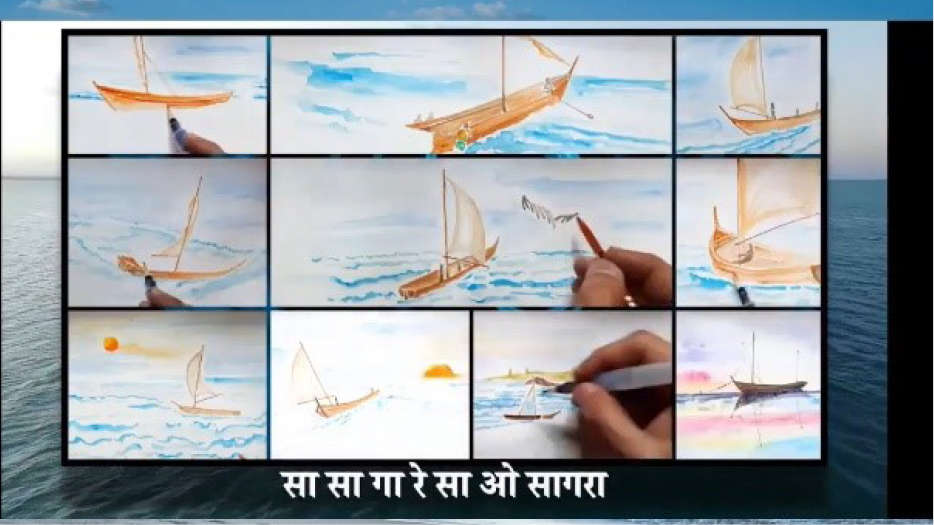
Prof (Dr) S Shanthakumar, Director-in-charge of Gujarat Maritime University spoke about the sorry state of representation of women in maritime professions. He said, “In spite of advances in science and technology and in spite of Socio cultural economic developments happening globally, It is extremely disappointing to learn that Maritime sector have been uniquely affected by gender biases over the years. Though historically women have played an important role in advancing a number of issues central to ocean governance as understood today Whether in the context of industrial and small-scale fisheries, or aboard ships and vessels, the gendered life worlds of marine-based societies, have been amply documented, particularly in terms of how sailing, surfing, maritime navigation, and other forms of seafaring have historically been perceived as distinctly “masculinized” practices.”
Prof (Dr) Vasant Shinde, Founding Director-General of the National Maritime Heritage Complex at Lothal delivered the keynote address. He delved into the Harappan civilisation and the later period to talk about evidence of different phases of urbanisation and their connection with the maritime identity of the nation. Arguably, civilisations and coastlines are interconnected and it is now that the Government of India is working towards the preserving the traces of these maritime connections by celebrating its history of maritime trade and contact with the rest of the world with initiatives like the National Maritime Heritage Complex at Lothal. Indeed, the deeper we explore, the more examples we find of unsung frames in Indian maritime history.
The objectives of the conclave were to stimulate discussions on the under explored dimensions of Indian maritime history, especially coastal communities and the role of women in the Indian maritime past and present. It is hoped that thoughts from the various sessions would become starting points for further research in maritime history with coastal communities and women as foci, which would, in turn, influence policy on development, tourism and climate change. The conclave was an attempt towards articulating thoughts and ideas about communities living on the coastline and about women who have contributed to Indian naval power and maritime influences historically and in the present.
Scholars talking about the coastal communities at the Conclave highlighted the significance of turning to the communities living, currently or previously, on the coastline of India. Dr Radhika Seshan began by setting the theme of the session by raising the question about what the term coastal communities means. Does it refer to those communities that are engaged in fishing? Citing the example of the very famous Koli community of the Maharashtra coast, she highlighted that the Kolis are the only littoral communities that people in general know about. She insisted that the study of coastal communities should involve all more communities: those involved in agriculture too in coastal terrains.
Prof Ranabir Chakravarti, a renowned maritime historian explained the role of the Ganga-Brahmaputra delta which is the world’s largest delta region that comprises modern Tripura, West Bengal and Bangladesh in fostering human engagement with the seas and the hinterlands. Prof Ranabir Chakravarti touched upon the influence of the sea on the coastal heritage of Bengal. He spoke about fascinating examples of the influence of the delta on the culture – an example includes the music of SD Burman. He spoke about the role of coastal communities from the earliest days up until the late medieval times. He pointed out that although in early Indian Sanskrit literature the coastal communities do not figure significantly, references to Navikas and Mahanavikas are scattered all across early Indian literary genres. These communities from the area may have been quite affluent too as can be deduced from the study an inscription of a Bengali Mahanavika of Raktamrittika named Buddhagupta found in Malaysia. The delta as a coastal zone fostered a generation of communities that contributed immensely in the history of South Asia.
Cdr Kalesh Mohanan spoke about the specificity of the communities of the Andaman and Nicobar Islands as island communities – an apt way of reminding his fellow scholars that no two communities are the same and that the expression “coastal communities” is not enough to talk about the unsung frame of communities that the session was dedicated to. Cdr Mohanan shed light on the nature of these coastal communities as opposed to those from the mainland. The islanders of the Andaman were cocooned from the world at large and this has made them culturally and racially distinct from the mainlanders. Leora Pezarkar discussed her work on the Bene Israeli community and their way of life. She spoke about the identity and the lifestyle of her community which identifies itself as littoral. She also pointed out that the community adapted to the local customs while also retaining their very idiosyncratic Jewish tradition.
Dr Andre Baptista presented an example of the way the East Indian community helped in excavating an area on the Konkan coast. He drew attention to the immense possibility of educating the coastal communities and enlisting their support in archaeological and conservation projects. Speaking of the Konkan coast exploration, Dr Andre Baptista made a case for the need to work towards the inclusion of the local coastal communities in the matters pertaining to their heritage. Dennard D’Souza underlined the fact that with the homogenisation of all cultures, the uniqueness as well as the diversity of the peoples living on the coasts are fast eroding. He shared his journey while researching the coastal communities of Ratnagiri. According to him the ancient literary sources were virtually mute on the communities of the western coast, which was pulsating with activity.
In tribute to the unsung craft and skill of boat builders and boatmen along the coast the conclave had a special audio-visual rendition. Titled, “Sagara” it integrated classic seafaring beauty in three elements. These were maritime emotion in writing, captivating voice of Riddhi Joshi and time-laps doodle by Prathamesh Sawant into an amazing song!
Our vision at the Maritime History Society is to evolve into a body of eminence in the field of maritime history through nurturing of historical research among young mariners and to showcase Indian maritime heritage through the publication of emerging perspectives for a vibrant and resurgent maritime India. Moving ahead towards this vision, a session basedon the theme “Women in the Indian Maritime History” was organised.
In the session on women in the Indian maritime history, Lt Cdr Rajeshwari Kori, Reshma Nilofer and Sucheta Jadhav spoke about the experience of being at sea as women. The three women spoke about their journey as professionals and left us with thoughts about: what can we do to make our shipping and naval environments inclusive? Is gender parity so difficult to achieve in the 21st century? What can we learn from these women to make more women feel welcomed into the maritime domain? What can we do to inspire more women to join the maritime professions as entrepreneurs, pilots, and naval personnel in several capacities? Like all elements of nature, the seas do not discriminate in terms of gender. We need to take a closer look at the power structures created around the access to the sea and its resources. The three practitioners shared their personal experiences and gave us a glimpse into their journeys. They put forth their stories across in a disarmingly simple way. they made their journey very down-to-earth. Lt Cdr Kori said that she heard Late Vice Adm MP Awati talk about the navy and the defence forces and she got inspired to join the Indian Navy. Ms Jadhav observed that seamanship has got nothing to do with gender. In her words, it does not have anything to do with age either! Reshma Nilofer again made her journey sound very simple – she saw that no woman was doing much in terms of piloting. She thought someone should start and decided that she should start herself. These stories showcased the simpler side of the journey, drawing the attention to enjoyment, interest, and passion.
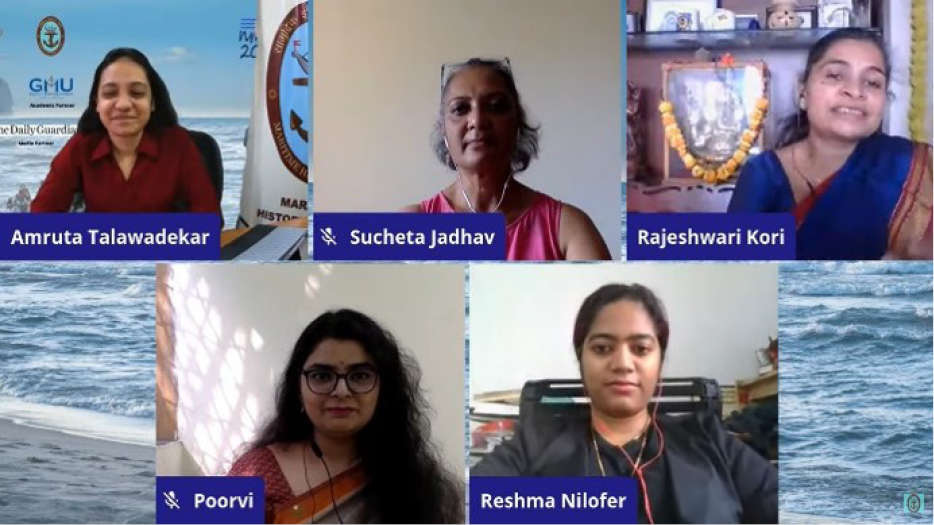
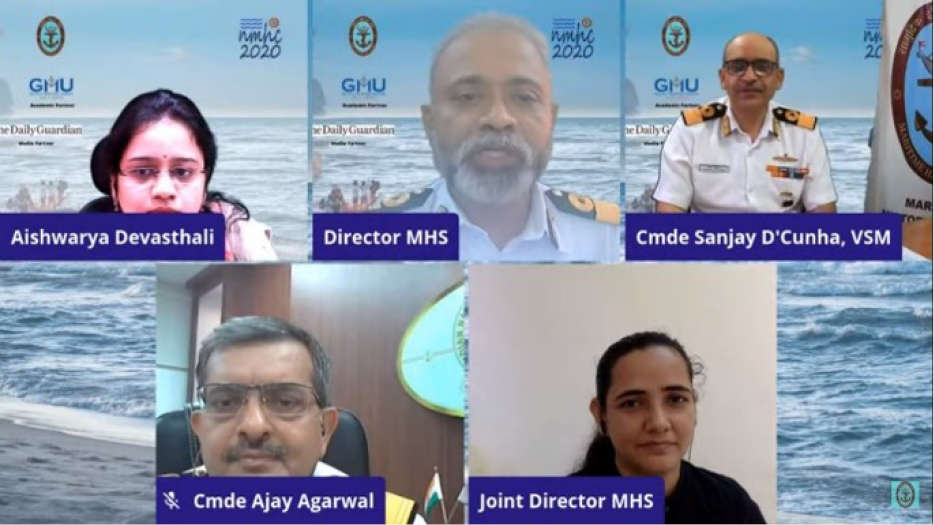
Women have proved to be avid warriors and brilliant administrators while securing a place in history, be it in fields of warfare, politics, art, literature and business among others. Across time, we have seen women be a part of the social, educational and humanitarian circle in society contributing immensely to every field. The Maritime medium or the sea doesn’t see gender. A number of women have proved themselves in the field of shipping, warfare, aviation and sailing among other fields within the maritime domain. This session thus looks into the contribution of women in the maritime field. We have with us three eminent speakers whose sheer love and dedication for the field has brought them with us today.
Women in the maritime history of other countries and locations are rare to find. Internationally speaking, the women one hears of is Englishwoman Janet Taylor. Taylor is known for adjusting calculations to identify locations realising that the earth is spheroidal, not spherical. She went on to teach navigation, wrote a lot of books and developed a lot of nautical instruments. Women like the Swiss explorer Isabelle Eberhardt, known for her exploration of Algeria, and closer home Rani Abakka and the Pepper Queen Keladi Chennamma are known for having the maritime vision for resisting the influence of the Portuguese. In the modern period of Indian history, we hear of the women’s wing of the Royal Indian Navy, the WRIN. The session examined the ascendancy of women back in history who set a benchmark in the field of shipping and entrepreneurship extensively highlighting the work and contribution of Sumati Morarjee.
Like the other maritime fields, shipping too has predominantly been a male profession. Poorvi Shriyan, Adjunct Research Associate and Amruta Talawadekar, Research Associate at Maritime History Society, spoke about legendary women in Indian maritime history. The former spoke about Queen Abbakka and the latter about women in WRIN (Women’s Royal Indian Navy) and Shrimati Sumati Morarjee, who set a new benchmark in the field of entrepreneurship. Her journey from an ordinary woman to the Executive Director of Scindia Steam Navigation Company Ltd, the biggest Indian Shipping company in the private sector in India is an example of her strength, will and foresight.
Historically, defence was a male dominated field till the twentieth century. India was by then under the British rule and was part of the Queen’s provinces. The maritime security was under the Royal Indian Navy. During World War II, the Royal Indian Navy began inducting Indians including women to fill up shore jobs. The Women’s Auxiliary Corps (India) was set up in April 1942. Subsequently the Women’s Royal Indian Naval Service that was part of the Women’s Auxiliary Corps was set up in Feb 1944. This became a symbol of the new era and a pioneering step for women aspiring to be in the defence field.
The session constructively highlighted and envisaged on navigating the role of women in Indian Navy in the 21st Century. Capt. Radhika Menon became the first Indian female captain of a Merchant Navy ship. She led a dangerous mission rescuing seven fishermen who were trapped at the Bay of Bengal in a sinking boat which capsized due to engine failure and breakdown of the boat’s anchor as a result of a sea storm in 2015. With her spirit, dedication and courage she was a proud recipient of the top international bravery award by the International Maritime Organisation (IMO) in 2016. In 2017, the Indian Coast Guard became the first Indian force to have inducted women officers for combat and patrolling roles onboard KV Kuber.
In 2018, six women officers led by Lt Cdr Vartika Joshi successfully circumnavigated around the globe in a sailboat. They displayed their sheer passion, perseverance and unrelenting spirit towards the sea on their 254-day long voyage facing the rough seas, scorching sun and freezing winds. Their boat was named as Tarini or the saving goddess. Sub Lt. Riti Singhand Lt. Kumudini Tyagibecame one of the first women to have joined as an ‘Observer’ (Airborne Tactician) in the Indian Navy’s helicopter stream. Earlier, the entry of women was restricted to the fixed-wing aircraft that took off and landed ashore. In 2019, Sub. Lt. Shubhangi Swaroop was part of the first batch of women pilots inducted in the Indian Navy.
Maritime travel and commerce have conventionally been understood to the primordial connection that human civilisation has had with the oceanic expanses on the planet. Cmde Ajay Agarwal’s study of the dhows sailing between the Gulf of Kachchh and the Persian Gulf reiterated the history of the sailing and trading connection between India and several coasts on the west. The Bhadalas and the Kharvas have been impacted as a result of the sanctions by the United Nations on Iraq in the 1990s. The chain of events and their consequences are a lot more complex than this summary but the key takeaway is that the larger geopolitical contexts have fostered networks and relationships that pan out in smaller narratives. We are yet to see how transoceanic connections are yet to pan out in our times.
The trade connections belonging to the past have consequences for claims in the present times. The new regionalism perspective presented by Cmde Sanjay D’Cunha focused on the way power politics continues to unravel in the Indian Ocean Region today. His analysis calls for a relook at the support being extended to Project Mausam, a crucial initiative towards the display of India’s historical presence in the Indian Ocean.
While the previous papers talked about the movement of goods, the India-Africa connection highlighted by Aishwarya Devasthali was one instance of talking about movement of people. The presence of the Siddis in the Indian soil can be appreciated from the instances of built heritage they have left behind – the fort of Janjira, the Kokari tombs, and the coins minted under the dominion of the Siddis are examples of the exchange that has materialised over centuries, if not millennia. Thus, there is a need to study the archaeological evidence from the perspective of the communities that have moved across the ocean.
We hope that this national maritime heritage conclave has been able to do its small bit to shape the direction maritime history, as a discipline, in India must consider taking so that it may include areas neglected previously. We shall continue to address many more unsung frames in our research projects and our upcoming initiatives.
Steering away from traditional narratives is important to gain a holistic understanding of our past. And that is exactly what Maritime History Society set out to do with this National Maritime Heritage Conclave. Historical discourse on a niche topic as Maritime History will open up new interpretations and new learning in the way we have been looking at our history. For a better appreciation of the traditions, heritage and cultural practices of coastal communities and seafaring groups of India, it is important to know their history and develop the historiography that will aid in a better understanding of the communities. Connectivity via the sea with the rest of the world, historically, brought in extended commercial and cultural links with the world. India, especially the coastal belts and the riverine valleys have been a melting pot of culture due to such connectivity that resulted into flourishing.
The discussions in the session on women made it clear, age and gender are social constructs that can be and have been defied by women proving that the chauvinism in the field of seafaring should be kept at bay. The maritime domain is multidimensional. It has the onus of contributing trajectories for a wide connection with its ability for displacement of ships and boats, by the possibility of intermingling of people, as carrier of ideas and assimilator of culture. These are the key take aways from the programme that spanned two days but the substance of which has spanned millennia.
Do continue to support such initiatives by Maritime History Society. The Support page on the website lets anyone and everyone express solidarity with the cause of the awakening Indians’ maritime consciousness through heritage. We have several such programmes to organise to reach the public. We have several research projects to undertake, more narratives to uncover, and more museum and heritage spaces to create. Come, make a difference.
Dr Soni Wadhwa is Joint Director (Research) at Maritime History Research.

